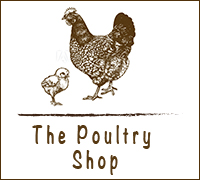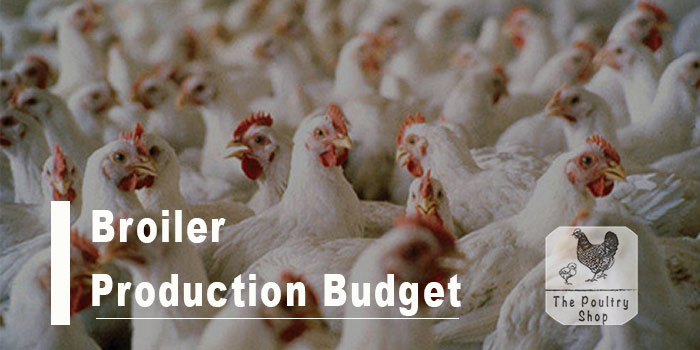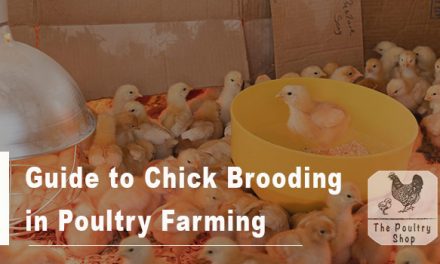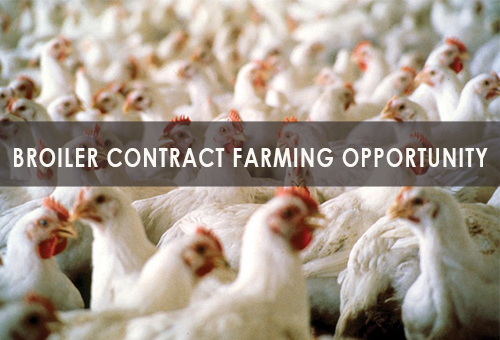Thinking of starting a broiler project and need to know the kind of budget or capital required?
In this article, I will share with you a basic broiler budget to help guide you on the capital and equipment you may require to start rearing 100 broilers.
I will also share with you tips on how to lower your production costs and increase your profits.
Production Budget for 100 Broilers:
| ITEM | QUANTITY | UNIT PRICE (USD) | TOTAL COST (USD) |
| Costs: | |||
| Chicks | 100 | 0.5 | 50 |
| Broiler starter (straight feed, 50Kg bag) | 1 | 25 | 25 |
| Broiler growers (straight feed, 50Kg bag) | 2 | 24 | 48 |
| Broiler finisher (straight feed, 50Kg bag) | 4 | 23 | 92 |
| Stress pack (100g) | 1 | 5 | 5 |
| Disinfectant | 1 | 8 | 8 |
| Vaccines | 1 | 10 | 10 |
| Wood shavings (50Kg Bag) | 4 | 2 | 8 |
| Labour | 1 | 20 | 20 |
| Transport | 1 | 10 | 10 |
| Electricity | 1 | 10 | 10 |
| Other overheads | 1 | 10 | 10 |
| Total Costs | 296 | ||
| Sales (less 5% deaths/mortality) | 95 | 5 | 475 |
| Less Total Costs | 296 | ||
| Gross Profit | 179 |
Budget Assumptions:
- All prices in USD and a rough guide.
- Mortality (death) rate of 5%.
- Production period – approximately 6 weeks.
- The poultry structure or cage and equipment is already available e.g. chick fonts, chick feeders, drinkers, feeders, infrared lamp, brooder, etc.
- Live weight after 6weeks ranges between 1.95-2.4kgs. After slaughter and dressing, the weight should range between 1.8kg to 2kg.
Tips on How to Reduce Broiler Production Costs:
When you intend to start a poultry project, sometimes budget constraints may be very discouraging . That is not an excuse to shelve the project though. To cut on production costs, you can substitute as follows:
Feed
Feed accounts for the greatest cost in broiler production. If you have maize stocks or can find cheaper sources, instead of giving straight feed, you can buy concentrates and mix with course ground maize and make your own feed. Feed manufacturers can advise you on the best mix ratios.
Infrared bulb (heating)
To save on electricity and cost of buying an infrared bulb, you can use charcoal. You light the charcoal and leave it burning for some time. When its no longer producing smoke, put the glowing charcoal in a specially-designed charcoal burner (mbaura) or clay pots and put in the brooder or poultry house to provide warmth to the birds.
Clay pots retain heat for longer hours. Always ensure the pots are covered with mesh wire on top to avoid birds trying to get inside the pots. Ensure there is adequate ventilation to avoid suffocating the birds as well.
You can also put hot water in 2 litre water bottles and securely cover the tops. Put in fowl runs at strategic places to ensure heat from the water bottles evenly provides warmth throughout the poultry house or cage.
Stress pack
To reduce budget costs, you can cut aloe vera (gavakava) into pieces and crush to extract the juices. Place the cut pieces into water containers or drinkers and give the birds to drink. Give at least twice a week.
Lighting
To save electricity required for providing light to the birds, use solar systems or portable solar lights. For suppliers of these you can check Classifieds and Business Directory sections on this blog.
Wood shavings
Instead of buying wood shavings, you can replace with grass as bedding which you can freely cut or get from the roadside. Always disinfect the bedding first before use.
Labour
Do you really need to pay someone to handle your project? If you can manage on your own, the better. You can surely make a saving on labour costs.
Drinkers and chick fonts
You can get creative here! Some poultry farmers cut 5L plastic containers and put a stone in the middle to ensure the birds do not tilt the container and wet the bedding. Plastic containers are more preferable to metal ones as they are easier to clean and do not get rusty over time.
Feeders
You can cut plastic containers or even use metal containers for putting feed. It works fine. Ensure there is a stone in the middle to avoid birds spilling the containers. Chickens can be messy sometimes and you cannot afford to lose feed through spillages.
Marketing
On average it takes 6 weeks at most to raise a broiler chicken to be ready for market. Due to new feeding methods, its possible to sell at 5weeks or even less especially for baby chickens if you find a market for such birds.
The economic situation is so hard and clients are not spared too. Instead of selling full chickens, another option is to sell cutlets such as legs, heads, intestines, livers, gizzards, wings and you neatly pack these in plastics.
Its much affordable for clients as compared to buying a full chicken. Study your market and offer what they are willing to pay for as long as you remain with a profit in your pocket.
As you can see, these tips can help you cut on budget costs as you start your broiler project. You will realise that as the number of birds you keep increases, you will also have more capacity to buy proper equipment for running your broiler business.
Advice on Keeping Broilers:
Market research
Do proper research to find out if there is a market in your area for your chickens. Check out the level of competition in your area and how much current producers are charging. Do not start a business without an idea of who your target market is and if there is demand for your product.
Start small
The temptation to start with a large batch from the onset is always there. Start small and learn the production processes, vaccination procedures, diseases, slaughtering processes, marketing, etc. Avoid starting with too large a batch without adequate knowledge and experience in the business. You will be disappointed if things go wrong. Once you get more confidence and knowledge in the business, increase batch quantities gradually.
Selection of chicks
To avoid losses, always buy chicks from reputable suppliers. Avoid buying chicks from cheap sources as you run the risk of getting “reject chicks” which hardly grow. You can watch this video on my Youtube page of a fraudster caught selling fake broiler chicks.
Always use good quality feed
Always buy feed from reputable suppliers. Avoid cheap feed from roadside merchants.
Avoid changing feed suppliers unnecessarily as this affects consumption and growth of birds.
Introduce feed gradually from one stage to the next for instance from broiler starter to grower.
Training
Endeavour to get adequate training or knowledge on proper broiler management practices. This will help you cut on unnecessary costly mistakes. You can subscribe to my free Email Newsletter for tips and advice that I post regularly on this blog.
I also have a calendar where I post poultry training events and its always in your best interest to check the calendar on this blog or on my Facebook page for latest updates.
Practice proper hygiene and good bio-security
- Passion and hard work is required in this business. Broilers require extra care and attention. Never compromise on hygiene.
- Always clean and sanitize your hands before handling the birds. Ash is a good sanitizer too.
- Have a foot bath with disinfectant at the door entrance of the poultry house to prevent bringing diseases into the fowl run. Do not allow visitors near the birds as they may transmit diseases from outside unknowingly.
- Control rats, dogs and cats from accessing the poultry houses as these may introduce diseases such as salmonella. Fumigation tablets work very well to keep rats away.
- Allow proper ventilation in the brooder or poultry house. Birds need access to clean and fresh air all the time which also helps keep the bedding dry. Wet bedding is a haven for bacteria that causes diseases.
- Bedding should always be clean and dry to avoid diseases.
- Provide cool and clean water all the time when its hot. In cold months, warm water is the best to encourage birds to drink. Water is good for appetite and increased feed intake which results in big and healthy birds.
- Ensure poultry house or cage is not too small and uncomfortable for the birds to avoid cannibalism or pecking on each other. You can lose a lot of birds if cannibalism is not controlled.
- Vaccinating your chicks is a MUST. Never compromise on vaccination programs in order to increase profits. You will be disappointed with the losses through disease outbreaks.
Rearing and selling broilers is a profitable venture which has sustained many families over the years. As long as people need to eat, the demand for broiler meat will always be there – an opportunity for you to make money!
Did you find this article helpful? Leave a comment below or subscribe to my free Email Newsletter and also like The Poultry Shop Facebook page. Thanks!




this information is very important..thank you so much
Excellent and thank you so much.
very informative thanks. you just saved a livelihood
yes it was useful tnx dear
The article is very informative thank you ,is there any statics on consuption per head and profitability of broilers in zimbabwe .Like how many are produced per year and how many tonnes are imported annualy ..if there is any website or page please assist
My WhatsApp contact is +260964291908 or +260971704537
Thank you Allen this is meddy from Uganda I would like to expand my stock to one 1000 now can I use this same format and expand respectively
hie allen where can we get the best chicks
Thank you for the information it was helpful
This is great information. I want to start this business and learn more about breeding broilers.
One of the best articles I have ever come across. Thank you sir. Do you have a pdf version of this same article? Please inform, I want to have this for easy access. Any YouTube channel? And what name should I follow you on Facebook Sir?
Thanks you for sharing, but I have a store room which I want to turn into a poultry house it has one door and small window but the I want to put a wire and grill door on the main door. I wanted to find out if the ventilation will be adequate?
From the description, ventilation will be inadequate. You are bound to have problems with diseases later. Chickens need plenty of fresh air. Good aeration helps keep bedding dry, discourages diseases and also helps the birds breathe fresh air.
Very informative
Thank you so much
Any recommendations of where I can buy the day old chicks and the feed for such prices
very beneficial article indeed.
Thank you Rocky..
Nice article. I am thinking of starting this project but I am very far thus 450km from Harare. I need a guide personally to start with and also to tell me reputable companies which sell broiler day old
thanx in advance
Kindly do research and continue reading articles on this blog to help you understand this business more. Suggest you visit the likes of Irvines, Novatek, National Foods for broiler chicks and training as well. Good luck!
Wow!! this is awesome information I have been looking for to start a poultry project. Thanks for the info
Your welcome Wambi, glad you found the information useful.
Thanks sir for .I have started my project and your information has made it easy too.
It was of great importance to me cause I do the field of agriculture with alot of passion and was looking for how to start my own business to enable me pay my rent and all the rest
Poultry farming is the way to go. Broilers provide a quick return and roadrunners it’s more of a long-term venture provided you have ample space and capital to invest before revenues start materializing. All the best!
This article is helpful!!
Thanks Vincent!
This is very helpful.
Thank you Terrence
Am glad have landed on an article I needed but how often do u clean the brooder or remove there bedding
There are no set times..however, bedding should always be clean and dry. Always turn bedding with a garden fork on a daily basis to ensure it gets aerated. If you find bedding (wood shavings, grass, etc) becoming smelly, wet or even solid (crust-like), it needs to be changed to avoid diseases.
the information is very helpful. i usually have problem with my birds which die when they are around 5 weeks they have big livers small gizzards and water in their bellies
Hi Lloyd, please check this articles on Ascites or “water belly” disease: https://thepoultryshop.co.zw/what-is-ascites-in-chickens/
This is great want to start keep chickens though in zambia.
Great, we will keep posting articles here and you can get to learn more about poultry farming. Worthy venture to consider, well done!
This is very useful information on broiler chicks production and looking forward to get more from you.
Glad you found the article useful.
Hi saw this as I was randomly scrolling the for clues on the Internet my 4 weeks broiler chickens appear as if they are weak some of them are don’t move around as if the legs are broken what could be the problem and how do I resolve this
Hi Ryan, might be several reasons best to take it to the Vet though to be sure. It might be poor bedding type you are using, wet bedding, overfeeding or sickness from infections. Also check under the feet if the birds have no infection, thanks.
This is great work Allen. I have done a significant amount of research on broilers and it very pleasing to see something that is tailor made for Zimbabweans especially on the budgeting and potential returns. Keep up the excellent work sir.
Hi Nene, thank you for the compliment!
Good method for the one who is just starting
Thank you for giving me such information.It really helped me to start the project.
Glad you found the article helpful, all the best!
Thank you so much for the information some of my questions have been answered
Most welcome James..
this helped m a lot now about to start the project
Great news, all the best in your plans.
thank you very much. empowering. can u help me with plans for a cage house for 200 broilers with measurements.
Your welcome Gabriel. Kindly work with 10birds per sqm. For 200birds you need 20sqm. Fowl run can be 5m x 4m or 10m x 2m for instance. Will cover a post on what to consider for poultry house designs soon, thanks!
Oh thank you for educating us, with this knowledge im good to go.
Your welcome Marjorie. Glad you found the article helpful!
Powerful, very profound. Learnt a lot from the article.
ummmm that is really a loud sound ey…. anx i am about to start this will be informing you when i need help ….anx indeed
Your welcome!
Thanx Allen, this is good piece of information which i have found interesting as i prepare a poultry business plan.
Thanks Mashal, glad you found the article useful.
Waal this is Great!! I’m a Student at Gwebi Agric College Looking for Attachment at any Poultry Farm with huge batches anywhere close to Harare, my Email Lovemoremucharwa@gmail.com…. I like poultry business
Hi Lovemore, will advise if I hear of any suitable opportunities, thanks!
simba
Thank you this is very helpful.Wanted to ask can i mix broilers and pegions in one space?
Hi Faith..personally I wouldn’t recommend both in one space. Try to separate them. These birds have different resistant abilities to diseases.
Thank you very much especially on cost cutting measures.
Your welcome Ereck!
It’s very informative
Hi Berita, glad you found the article useful.
Impressive tips there. This is indeed life changing & empowering. Thank
Your welcome Nobert, glad you found the article helpful..
Thank you so much for this informative piece!
All my concerns have been addressed!!
Your welcome..